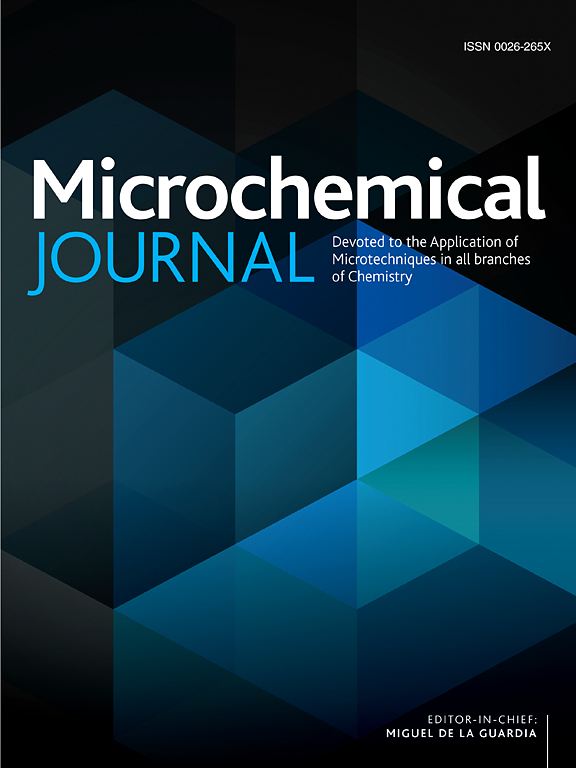A reliable fluorescent aptasensor for selective detection of trace estradiol based on metal–organic framework click-grafting aptamers functionalized fabric
IF 4.9
2区 化学
Q1 CHEMISTRY, ANALYTICAL
引用次数: 0
Abstract
The presence of trace levels of 17β-estradiol (E2) in food and the environment presents a risk to human health, underscoring the need for the development of sensitive analytical methods to detect and accurately monitor its concentration. In this work, we designed a competitive-type fluorescent aptasensor combined with a novel PVDF@UiO-cDNA electrospun nanofiber for E2 detection. The FAM-labelled aptamer in the samples was partially hybridized with cDNA on the PVDF@PDA electrospun by the alkenylation UiO-66. Upon the presence of E2 in the samples, E2 target selectively binds to aptamer, effectively inhibiting its pairing with the cDNA. This innovative approach seamlessly integrated the high capacity electrospun nanofiber, readily modifiable MOF crystals, and the high specificity of aptamer, resulting in an enhanced response to the E2 target. Under the optimized conditions, the fluorescent aptasensor exhibited a wide linear range of 1–100 nM for E2, achieving a high coefficient of determination (R2) of 0.9929, and a low detection limit (LOD) of 0.33 nM. The stability and reproducibility of electrospun nanofiber were validated through its application to milk and water samples, with recoveries ranging from 96.9 % to 130.2 % and a relative standard deviation (RSD) below 8.1 %. These findings highlight the sensitivity and reliability of the developed aptasensor, demonstrating its potential for monitoring trace E2 levels in food and water environments.

求助全文
约1分钟内获得全文
求助全文
来源期刊

Microchemical Journal
化学-分析化学
CiteScore
8.70
自引率
8.30%
发文量
1131
审稿时长
1.9 months
期刊介绍:
The Microchemical Journal is a peer reviewed journal devoted to all aspects and phases of analytical chemistry and chemical analysis. The Microchemical Journal publishes articles which are at the forefront of modern analytical chemistry and cover innovations in the techniques to the finest possible limits. This includes fundamental aspects, instrumentation, new developments, innovative and novel methods and applications including environmental and clinical field.
Traditional classical analytical methods such as spectrophotometry and titrimetry as well as established instrumentation methods such as flame and graphite furnace atomic absorption spectrometry, gas chromatography, and modified glassy or carbon electrode electrochemical methods will be considered, provided they show significant improvements and novelty compared to the established methods.
 求助内容:
求助内容: 应助结果提醒方式:
应助结果提醒方式:


